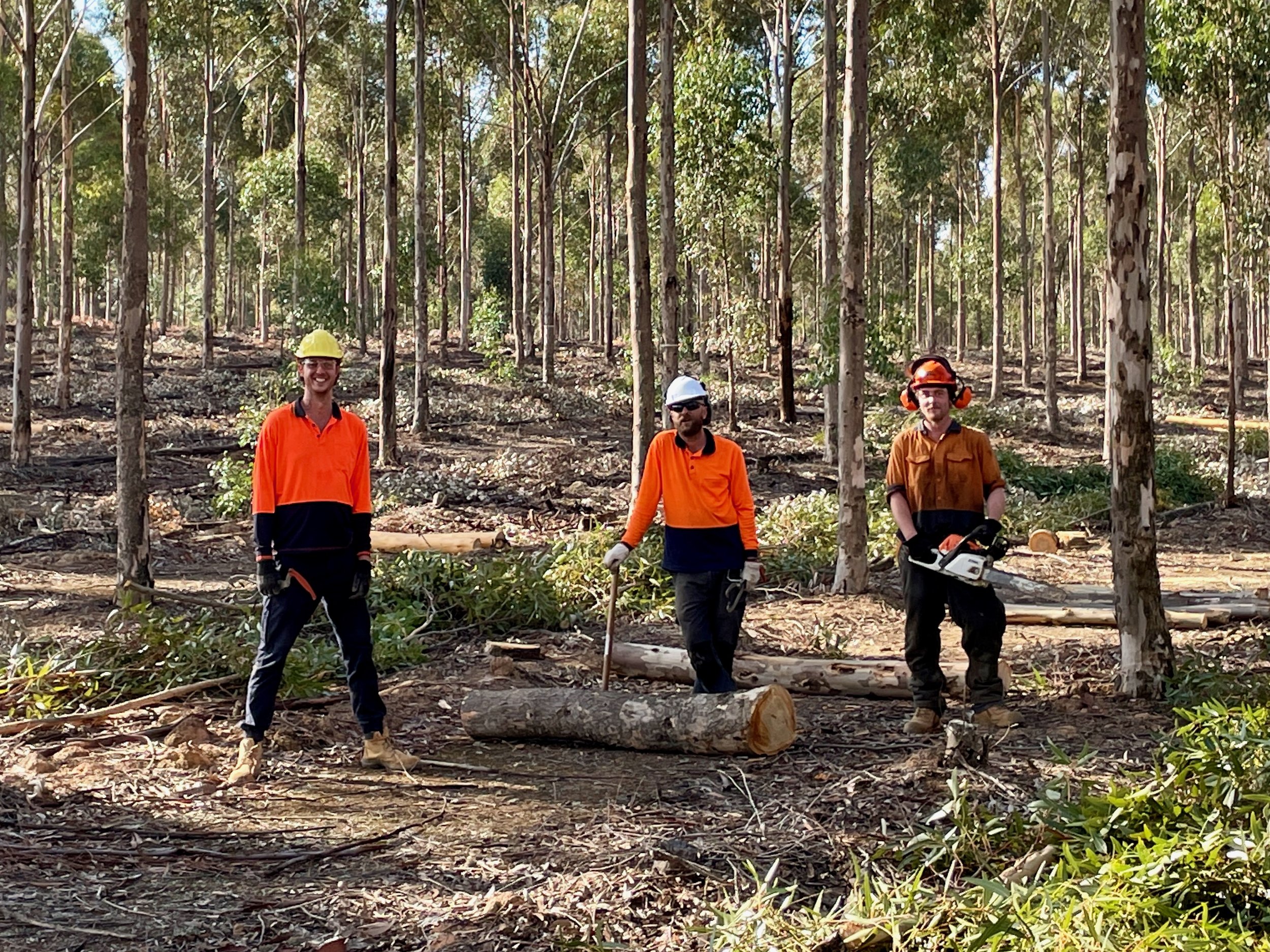regenerative forestry
What is regenerative forestry?
This is a question that comes up all the time… When people think of forests, they tend to think of a vast monoculture, occasionally clear felled in large chunks. Forestry does not have to be that way.
Hardwood plantations, actively managed for timber production, can become more and more like natural forests over time. These assets can be managed to support biodiversity while generating a permanent supply of renewable firewood, timber (everything from garden stakes to structural timber, cladding and more) and value added bioenergy products (liquid, gas and solid fuels and materials are derived from converting biomass to energy via pyrolysis) that help sustain local communities.
Instead of single monocultures, think keystone species surrounded by plant diversity.
Instead of clear felling, think selective harvesting that leaves an intact forest ecosystem behind.
Regenerative forestry is all the above and more. Most simply, it is forestry that helps regenerate the landscape.
Why use regenerative forestry?
Mitigating and adapting to climate change, demands land-use change, and in some great part, this means more trees are needed in the landscape.
Trees can be fantastic ecosystem engineers, helping to manage drought and flood cycles, create favourable micro-climates for livestock, and reduce the impact of high wind speeds. Deep root systems penetrate the soil, and bring moisture and nutrient to the surface to the benefit of local flora and fauna. Their branches and leaves slow the wind and push the wind profile higher, slowing evaporation at ground level and the spread of weeds across the landscape.
At its best, regenerative forestry can work side by side with broad acre farming, reducing the cropped or grazed hectares without compromising yields - this occurs in the following way:
subject to site assessment, regenerative forest assets can be located on marginal grazing or cropping land;
forest assets enhance income diversity, particularly beneficial to help manage income security through periods of drought or flood that may impact core business;
strategic species selection and siting can improve water retention in the soil profile, a combination of slowing water run off, slowing evaporation rates and enhancing soil profile itself.
In this way, regenerative forestry plantations can be more than a carbon sink, or a source of wood or a capital investment for private gain. We use regenerative forestry techniques to build and deepen community and stakeholder buy-in to forestry assets. This can includes the potential to monetise the benefits of enhancing local biodiversity, and improving hydrology systems, as investors and landholders seek to establish and manage commercial-scale forestry assets.
Black Cockatoos at Home in a wood4good Forest Asset
The problem with conventional forestry
Forestry practices have evolved largely over the last 200 years alongside industrialisation, with a focus on enhancing efficiency - this typically means using scale and species specialisation as efficiency drivers. While this has delivered benefits in the form of lower cost forestry product and genetic excellence in the most popular species, it has come at the expensive of natural capital, and community support.
Increasingly, community stakeholders, institutional investors, government agencies and consumers of wood product are demanding different forestry and land management standards. This has been driven by increasing awareness of threats to the natural environment including a decline of biologically diverse ecosystems, climate change, soil salinity, as well as degraded evapotranspiration and hydrological cycles.
Driven by these pressures, the sawlog timber industry, which harvests native forests and woodlands, is under significant pressure. In large parts of the country, native forest assets has been scheduled for complete cessation. Perversely, this has created demand for timber imports, with no guarantee those imports aren’t associated with similar, problematic forestry practices.
Selective Harvesting - Regenerative Forestry in Practice
Regen Forestry - Part of the solution
We believe that reconciling the historical tension between environmental pressure and commercial forestry, is possible. Locking up native forest, or closing down forestry operations, creates a risk that we solve the problem in our backyard, but simply outsource the problem to another place.
We believe regenerative forestry is a critical part of the solution. This means a renewed focus on facilitating and funding the development of new forest plantations, as a natural climate solution and a source of renewable timber products. With over 60 years combined experience at the intersection of forestry and ecology, wood4good has developed a set of regenerative forestry silvicultural principles and practices designed to:
Provide net-benefits for nature & biodiversity
Restore carbon & water cycles
Generate products & enterprise opportunities
Displace and substitute unsustainable resource consumption
Mitigate climate change & deliver climate adaptation
Produce high-value, carbon positive firewood & durable native forest products
Harnessing the Power of Coppicing
for forestry that is part of the solution:
The Wood4good Impact
When you buy from or work with wood4good, you can be sure that you are contributing to establishing and enriching regenerative forests - sustainable, renewable assets that sequester carbon while providing habitat for the creatures we share the world with… for good. In addition to net gains in biodiversity and ecosystem co-benefits within our assets, buying from us and working with us releases pressure on endangered ecosystems and displaces products from both mandated and illegal extraction.





